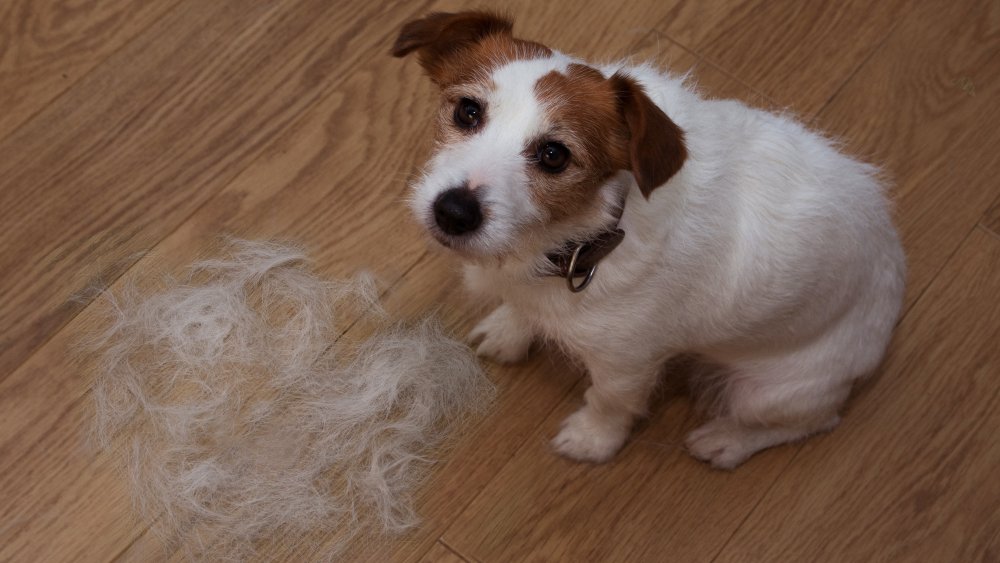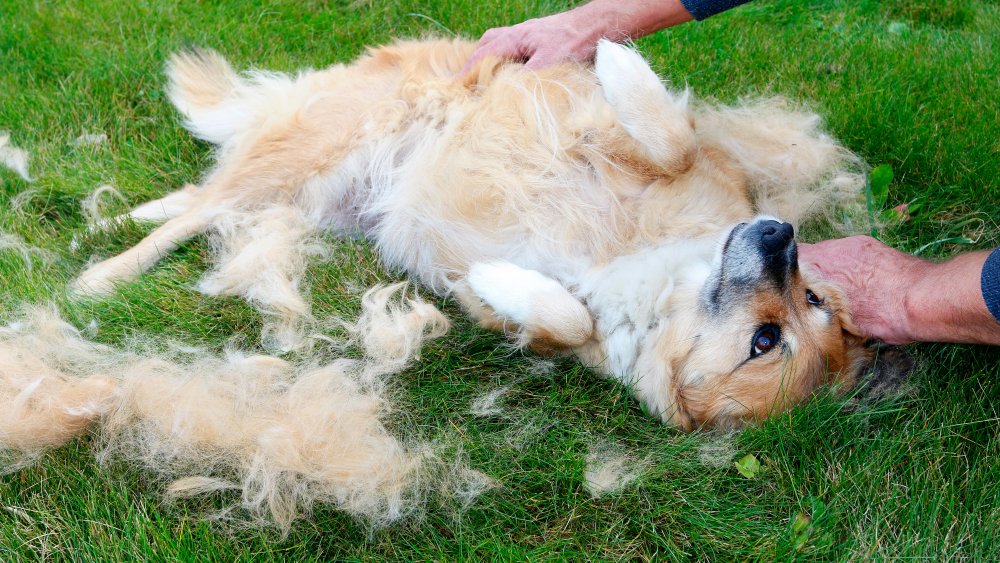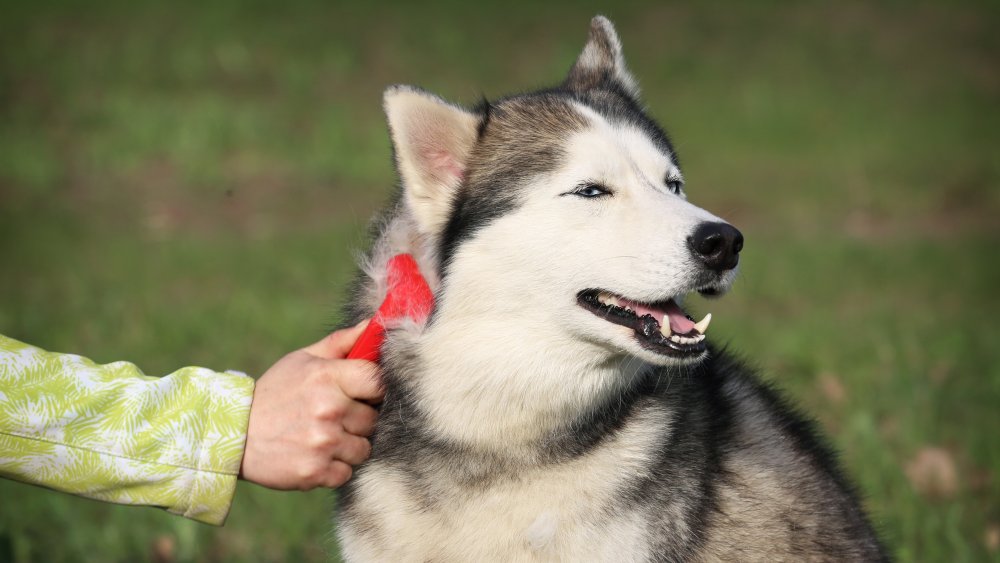The Reason Some Dog Breeds Don't Shed
Face it, dogs are fluffy creatures. Some of them are really fluffy. That's great for cuddling, but not so great when guests are arriving in ten minutes and you find a cloud of hair drifting through the room like a tumbleweed, as Fido scratches his neck and looks at you with those loving brown eyes. Now, you can't blame a dog for shedding. They can't help it. That said, there are some weird dogs that don't seem to shed at all, while others drop piles of hair everywhere they go. What's the reason for this?
The myth of the "non-shedding" dog
Size doesn't matter. Some of the largest dogs in the world, and some of the smallest, are all capable of producing voluminous amounts of hair for you to sweep up. The question is, which ones shed ... well, a little less? Or, perhaps, not at all?
Well, sorry to burst your bubble, but the notion of a dog who never sheds — or a hypoallergenic dog, for that matter — is a falsehood, according to Dogster. Even so-called "hairless" dogs still shed, just like humans shed their own hairs in the shower, pillow, and so on. That said, there are certainly breeds which leave far less furry follicles in your couch than others — for example, the American Kennel Club lists Afghan hounds, Giant Schnauzers, and Peruvian Inca Orchids as some of the canines that shed the least — but all of them still shed, just in different ways and at different times.
Okay, wise guy, why do some dogs shed less than others?
In general, according to the RSPCA, a dog's shedding level can be somewhat predicted by the type of fur coat it has. Often, though not always, dogs with long and silky coats will tend to shed more than dogs with short, coarse fur. This makes sense, given that short-haired dogs have less of a reason to shed old fur consistently, particularly during season changes, since they're less likely to overheat in the winter. That said, this doesn't always hold true, according to Hill's. Breed matters more than coat length, as certain long-haired breeds actually shed less than certain medium-haired ones. It's also important to understand the role that lifestyle and hormones play in dog shedding, as Pet Central points out: a lack of daylight often promotes shedding, which can cause dogs to shed far more in the winter, and shedding can also be influenced by temperature, nutrition, and activity level.
Either way, when considering which breed fits for you, the shedding level probably shouldn't be a big determining factor (unless allergies are a concern), especially when compared to temperament, size, and lifestyle. Also, it's important to always monitor excessive shedding, because it could also be a sign of an underlying condition or disease. If in doubt, consult your veterinarian.


